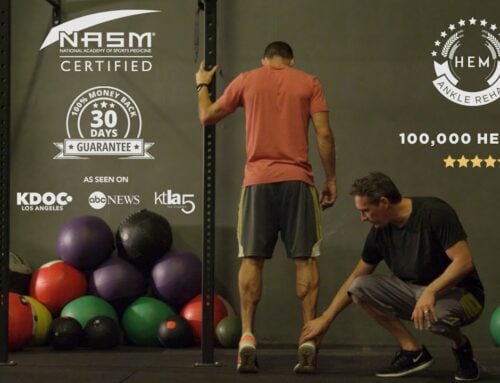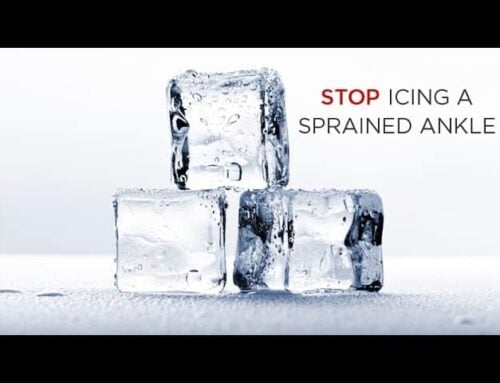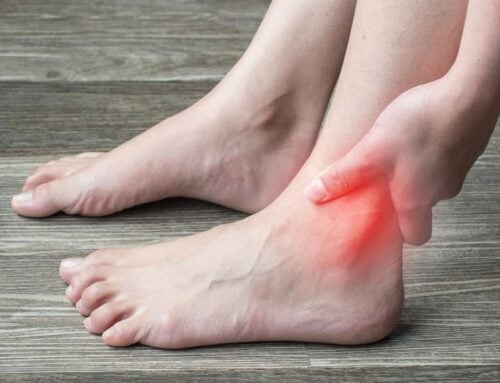
For many, high heels are the epitome of fashion and elegance. But let’s be honest – mastering the art of walking in them can be a bit of a challenge. Here’s everything you need to know about navigating the world in stilettos and pumps with confidence and poise.
And FYI, here at HEM Ankle Rehab, we recognize that while folks may need to wear high heels from time to time, we do not recommend them as they can cause all kinds of damage to the ankles, calves and feet.
But, assuming you do wear them occasionally, here’s what you need to know :)
Is there a trick to walking in high heels?
Navigating the sidewalk or a swanky office party in heels is not just about putting one foot in front of the other. Mastering the art of the heel requires understanding your body, your shoes, and the science of balance. So, is there a trick to it? Definitely! Let’s dive deep.
- Posture and Balance: The first trick starts with your spine. Standing tall and keeping your back straight creates a vertical line, which is essential for balance. Avoid leaning forward or backward. Engage your core muscles – think of them as your inbuilt stabilizers when walking in heels.
- Heel-to-Toe Walking: This technique is the essence of stiletto grace. Place your heel down first, followed by your toe. This rolling motion mimics the natural walking pattern and offers better stability than trying to land flat-footed or on your toes.
- Shorter Strides: In heels, your stride naturally shortens. Don’t fight it; embrace it. Short, deliberate steps ensure better control. Plus, it gives that poised, elegant walk many aim for!
- Visualize Walking Along a Straight Line: Think of models on a runway. Imagine there’s a straight line, and you’re trying to place each foot on this line as you walk. This technique, often called “walking the line,” helps improve balance and gives a more confident stride.
- Strengthen Your Ankles: Heels can be demanding on your ankles. Simple exercises like ankle circles or pointing and flexing your toes can improve ankle strength and flexibility. This will make heel-walking less wobbly and more graceful. To learn how to strengthen your ankles properly and safely, please check out our FREE TRIAL of HEM Ankle Rehab.
- Ground Awareness: Pay attention to the ground you’re walking on. Cobblestones, grates, and grassy areas can be challenging in heels. Being aware helps in adjusting your walk and prevents potential stumbles.
- Practice with Different Heel Heights: Not all heels are created equal. A 2-inch heel requires a slightly different technique than a 5-inch stiletto. Varying your practice with different heel heights can help you become versatile and adept.
- Break in Your Heels: Before taking your heels for a long walk or to an event, wear them at home. This not only helps you get used to them but also allows the shoes to mold to the shape of your foot, reducing the risk of blisters.
In essence, the real “trick” to walking in heels is a blend of the right techniques, consistent practice, and an understanding of one’s body. It’s an art that combines posture, balance, and style. With patience and persistence, you can master this art and wear your heels with confidence and elegance.
Can high heels hurt your feet?
High heels, though stylish and sometimes essential for certain outfits or events, are not always the friendliest to our feet. Many have questioned whether these fashionable staples can indeed cause harm. The answer is yes, and the reasons are multifaceted:
- Pressure Points: The elevated design of high heels shifts a person’s weight forward, leading to increased pressure on the balls of the feet. This heightened pressure can result in pain, inflammation, and even calluses or corns over time.
- Toe Compression: Narrow, pointed heels can cramp and compress the toes, leading to issues like bunions (a painful bump at the base of the big toe), hammertoes (where the toe is bent in the middle joint), and overlapping or curled toes.
- Arch Strain: Heels, especially those lacking proper arch support, can strain the foot’s arch. Continuous wearing of such heels can lead to conditions like plantar fasciitis, an inflammation of the tissue running underneath the foot.
- Achilles Tendon Tension: Over time, frequent wearing of high heels can shorten the Achilles tendon. This shortening can lead to pain and stiffness, making it uncomfortable to walk even without heels.
- Risk of Sprains and Fractures: Walking in heels can be a balancing act. Missteps, wobbles, or trips can lead to foot sprains or fractures. The higher the heel, the higher the risk.
- Blisters: As with any shoe, if a high heel doesn’t fit correctly, there’s a risk of friction, leading to painful blisters. This risk is heightened if there’s added pressure from the elevation of the heel.
- Decreased Foot Circulation: Tight-fitting heels can restrict blood circulation, leading to swelling and pain. In severe cases, it can even result in spider veins.
- Nerve Problems: Consistently wearing very high heels can lead to a condition called Morton’s neuroma, a painful thickening of the tissue around the nerves between the third and fourth toes. Symptoms can include tingling, burning, or numbness.
It’s essential to note that while high heels can indeed cause these issues, not everyone will experience them, and severity can vary. A lot depends on the heel design, fit, frequency of wear, and individual foot anatomy.
However, being aware of these potential problems underscores the importance of choosing well-designed heels, giving your feet breaks, and listening to your body. A balance between fashion and foot health ensures you can enjoy your heels without long-term repercussions.
Can high heels hurt your calf and ankle?
While the focus is often on the potential harm they can cause to feet, the effects on the calves and ankles are just as profound. Over time, this can shorten calf muscles, making flat-footed walking a tad uncomfortable. Ankle injuries, like sprains, can also become a risk, especially with stiletto types. Want to learn more about ankle health? Check out why your ankle might be hurting or this comprehensive guide on alleviating ankle pain.
- Altered Muscle Dynamics: With the foot elevated in a heel, calf muscles (specifically the gastrocnemius and soleus muscles) are in a shortened state. Over time, this continuous contraction can lead to a tightening or shortening of these muscles. When this happens, it may feel uncomfortable or even painful to stretch them out, such as when switching to flat shoes.
- Strain on the Achilles Tendon: As the calf muscles are continuously contracted, the Achilles tendon – which attaches the calf muscle to the heel bone – undergoes increased tension. This prolonged stress can make the tendon stiffer and shorter, leading to discomfort and increased risk of injuries like Achilles tendonitis.
- Ankle Instability: Walking in heels requires impeccable balance. The elevated and often narrow base of support means the ankles work overtime to stabilize the foot. This constant tension increases the risk of rolling or twisting the ankle, potentially leading to sprains or even fractures.
- Increased Risk of Sprains: The ankle is a hinge joint, allowing up and down movement. In high heels, especially stilettos, the lateral stability of this joint is compromised. A minor misstep or walking on uneven surfaces can easily lead to a sprained ankle.
- Chronic Ankle Issues: Repeated sprains or continuous wearing of very high heels without proper ankle support can lead to chronic ankle instability. This condition results in the frequent giving away of the ankle, pain, and swelling.
- Altered Gait and Posture: High heels don’t just affect the feet and ankles. They change the way you walk, potentially leading to posture problems. The pelvis tends to tilt forward, increasing the curve in the lower back, which can result in back pain. As a reaction, the calves may become more engaged, leading to additional strain.
- Circulation Concerns: Tight straps or ill-fitting heels can impede blood circulation, not just in the feet but up into the ankles and calves. Over time, this could increase the risk of varicose veins.
Given these potential issues, it’s essential for heel wearers to be proactive in their care. Regular stretching exercises for the calf muscles, strength training for ankle stability, and ensuring periodic breaks from heels can help mitigate some of these risks. And if you’re experiencing ankle discomfort or concerns, it’s worth exploring resources like HEM Ankle Rehab for guidance.
How should a beginner walk in high heels?
For beginners, start with a thicker, shorter heel. Think wedges or block heels, which offer more surface area and are thus more stable. Here are some steps for the uninitiated:
- Posture is Key: Stand tall with your shoulders back.
- Small Steps: Take shorter, more frequent steps rather than long strides.
- Practice: Start on a flat surface before venturing onto slopes or stairs.
- Grip with Toes: This might sound odd, but gripping the shoe slightly can offer more control.
Do you walk on your toes in heels?
Not exactly. While it may appear that heel-wearers are tiptoeing, the correct technique is heel-to-toe. Plant the heel down first, followed by the toe. This method provides better balance and a more graceful walk.
How do beginners walk in heels without pain?
Walking in heels without pain might sound like a dream, but it’s achievable. Here’s how:
- Choose the Right Fit: Shoes that are too tight or too loose can cause friction and pressure points.
- Gradual Increase: Start with lower heels and work your way up as you become more comfortable.
- Use Inserts: Gel inserts or cushioned insoles can offer added comfort.
- Limit Wear Time: For beginners, it’s wise not to wear heels for extended periods.
A Step Ahead with HEM Ankle Rehab
Navigating the world in heels might come with its challenges, but the rewards – confidence, style, and a touch of glamour – are well worth the effort. To ensure you’re walking healthily, consider trying HEM Ankle Rehab. The best part? You can try it for free! With the right resources and techniques, you can master the art of walking in heels in no time.
Secret of the Pros
Everything You Need To Heal At Home
So, Why Rehab?
Most people think rest and ice will heal their ankle (even a severe sprain), but they end up with chronic ankle instability… 30% still have pain one year later!
And that causes all kinds of muscle imbalances in the body, which can lead more serious injuries, repeated ankle sprains and chronic ankle pain. It’s a terrible domino effect that can last for life.
That’s Where Rehab Comes In.
A great rehab program significantly improves how a sprained ankle heals. It eliminates pain fast and ensures your ankles are strong and stable with healthy range of motion, which helps prevent future sprains.
Rehab Is The Key To
Healing Ankle Injuries Fast
Recent studies have shown that rehab heals ankle ligaments safely and effectively. It’s the difference between the people that don’t heal a sprained ankle and the ones that do!
Injured Ankle
Without Rehab
Injured Ankle
With Rehab
HEM Ankle Rehab “Rehabs” Your Ankle

HEM is a complete ankle rehab and prehab program for the entire ankle, foot and calf complex. This is a very thorough program that contains so much more than anything else you can find online, but it’s still easy to do.
Scott will coach you through every step, as if you are with him, one on one. Just follow along with the videos to rebuild your ankle from the ground up.
You can expect pain free mobility and strong, stable ankles that are protected from an ankle sprain, without ankle braces!
REAL PEOPLE, REAL RESULTS
From Scott Malin, NASM-CPT, CES
Creator, HEM Ankle Rehab
October 19, 2025
Fifteen years ago, I had to give up what I love doing most… playing basketball. I sprained my ankles so many times that I could no longer play. It was devastating.
Like you, I used R.I.C.E. (rest, ice elevation, compression), but my ankles healed so slowly and badly, they eventually got so weak, I would sprain them just walking down the street!
Being a fitness trainer, the only thing I had going for me was a fascination with helping people get out of pain and strengthening their bodies.
So, I decided to research all the cutting edge techniques to heal an ankle sprain much faster and better than R.I.C.E.
After months of research, I discovered that icing an injury can have a negative affect on the body’s healing process. Studies show that ice can actually slow down healing and too much rest left the ankles weak and unstable. This was shocking, but only part of the story…
New research was suggesting a much more proactive approach to healing that involved much better rehab techniques proven to dramatically speed up the speed and quality of the healing process.
Instead of months, healing took only days. And, if you had a chronically weak ankle that was in pain, these techniques would quickly strengthen and stabilize the ankles.
I kept improving on these techniques, drawing from many different disciplines and simplified them.
Eventually, after many more months of trial and error, I created a simple at-home healing system with very reliable results.
Since I was a fitness trainer, I was able to help all my clients (celebrities and athletes) whenever they got injured. I was even on the news a few times.
The response from my clients and friends was so overwhelming that a few of them eventually convinced me to share it with everyone.
Today, I am humbled that over 100,000 people have healed fully and fast with my program.
So, if you have any kind of ankle injury (new or old), just follow along with me in the videos and I’ll show you exactly what to do until you are completely pain free.
My message is simple… you do not have to give up what you love. And you do not have to live with chronic pain from old injuries. Life is too short and there is a better way!
I truly hope you will start using my program so you can get your life back and do what you love, pain free (and yes, I still play basketball every week and LOVE it!)
Thank you!
Scott
Heal Your Ankle FAST ⇣

30 day money back guarantee
15 YEARS. 100K HEALED.

Secret of the Pros
Everything You Need To Heal At Home
REAL PEOPLE,
REAL RESULTS
So, Why Rehab?
Most people think rest and ice will heal their ankle (even a severe sprain), but they end up with chronic ankle instability… 30% still have pain one year later!
And that causes all kinds of muscle imbalances in the body, which can lead more serious injuries, repeated ankle sprains and chronic ankle pain. It’s a terrible domino effect that can last for life.
That’s Where Rehab Comes In.
A great rehab program significantly improves how a sprained ankle heals. It eliminates pain fast and ensures your ankles are strong and stable with healthy range of motion, which helps prevent future sprains.

Rehab Is The Key To
Healing Ankle Injuries Fast
Recent studies have shown that rehab heals ankle ligaments safely and effectively. It’s the difference between the people that don’t heal a sprained ankle and the ones that do!
Injured Ankle
Without Rehab
Injured Ankle
With Rehab
HEM Ankle Rehab
“Rehabs” Your Ankle

HEM is a complete ankle rehab and prehab program for the entire ankle, foot and calf complex. This is a very thorough program that contains so much more than anything else you can find online, but it’s still easy to do.
Scott will coach you through every step, as if you are with him, one on one. Just follow along with the videos to rebuild your ankle from the ground up.
You can expect pain free mobility and strong, stable ankles that are protected from an ankle sprain, without ankle braces!
100,000 PEOPLE HEALED-
-
-
-
-
-
-
-
-
-
-
-
-
-
-
-
-
-
From Scott Malin, NASM-CPT, CES
Creator, HEM Ankle Rehab
October 19, 2025
Fifteen years ago, I had to give up what I love doing most… playing basketball. I sprained my ankles so many times that I could no longer play. It was devastating.
Like you, I used R.I.C.E. (rest, ice elevation, compression), but my ankles healed so slowly and badly, they eventually got so weak, I would sprain them just walking down the street!
Being a fitness trainer, the only thing I had going for me was a fascination with helping people get out of pain and strengthening their bodies.
So, I decided to research all the cutting edge techniques to heal an ankle sprain much faster and better than R.I.C.E.
After months of research, I discovered that icing an injury can have a negative affect on the body’s healing process. Studies show that ice can actually slow down healing and too much rest left the ankles weak and unstable. This was shocking, but only part of the story…
New research was suggesting a much more proactive approach to healing that involved much better rehab techniques proven to dramatically speed up the speed and quality of the healing process.
Instead of months, healing took only days. And, if you had a chronically weak ankle that was in pain, these techniques would quickly strengthen and stabilize the ankles.
I kept improving on these techniques, drawing from many different disciplines and simplified them.
Eventually, after many more months of trial and error, I created a simple at-home healing system with very reliable results.
Since I was a fitness trainer, I was able to help all my clients (celebrities and athletes) whenever they got injured. I was even on the news a few times.
The response from my clients and friends was so overwhelming that a few of them eventually convinced me to share it with everyone.
Today, I am humbled that over 100,000 people have healed fully and fast with my program.
So, if you have any kind of ankle injury (new or old), just follow along with me in the videos and I’ll show you exactly what to do until you are completely pain free.
My message is simple… you do not have to give up what you love. And you do not have to live with chronic pain from old injuries. Life is too short and there is a better way!
I truly hope you will start using my program so you can get your life back and do what you love, pain free (and yes, I still play basketball every week and LOVE it!)
Thank you!
Scott
Hurry, sale ends soon!
30 day money back guarantee



























